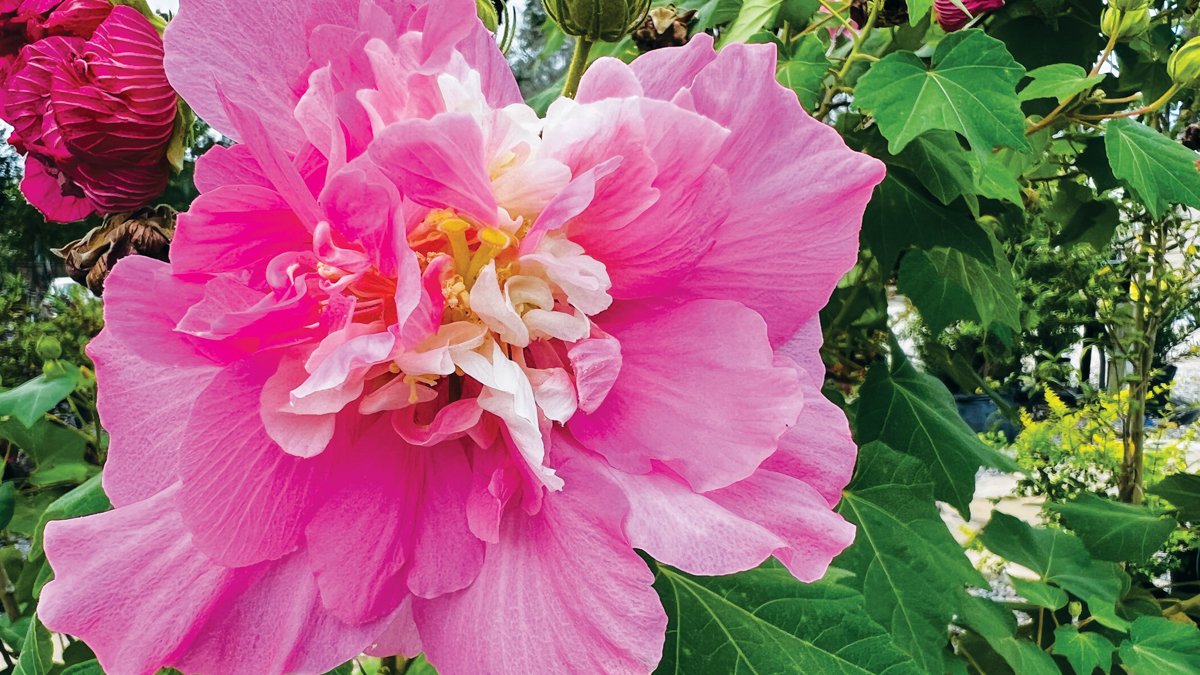Fall Back and Prepare for Winter (All 6 Hours of It)
Camellia Bud
Confederate Rose - Hibiscus mutabilis, also known as the Confederate rose, Dixie rosemallow, cotton rose or cotton rosemallow, is a plant long cultivated for its showy flowers. It is called the Confederate rose because, according to legend, the flowers soaked up the blood spilled on battlefields during the civil war. Felder Rushing, the co-author of Passalong Plants, an influential book on Southern gardening, recalls that ladies in Mobile, Alabama, gave these flowers to Confederate soldiers returning home from the war.
We live in a warm-climate 9-months out of the year, so when fall finally arrives we embrace it with open arms. It gets us excited about being outdoors and spending time in the yard and garden… the temperatures and humidity have begun to moderate — thank goodness right? This typically means we are outdoors more. So take advantage of that time by preparing your yard and your flower beds for the colder months ahead.
First and foremost, why is fall the next best season for planting? The soil/ground is still warm which helps roots branch out and take hold. It promotes good root growth. Now that it is not hot as Hades, plants and trees are not so stressed by the extreme heat. Fall can be rainy at times, that also helps strengthen and stabilize new root systems with plenty of water. Because generally the weather is cooler, pests and diseases do not prosper as much either.
Prepare your flower beds by doing a thorough cleaning. Remove weeds and any exhausted, lingering flowers and vegetables. If you are looking to plant bulbs, this is a great time to do that. Once planted, install a ground cover of your choice. There are a variety of mulches, however I recommend Pine Straw. It is one of the very best insulators. Edge-out your flower beds and spread your pine straw thick. During the winter, this native ground cover material breaks down nicely. As it breaks down, it puts nutrients back into your soil which helps in the spring when you are ready to install your favorite warmer-month plants.
If you are looking to plant some new trees we recommend Confederate Roses, Camellias, Crape Myrtles, River Birch, Elm and Southern Live Oaks. For shrubs, choose more deciduous varieties. Shrubs that bloom in the spring, or evergreens such as rhododendrons and azaleas tend to do well when planted in fall.
Some minor pruning can also be done in the fall, but don’t go crazy. Remember that when you cut back vegetation the moment you cut, you are exposing those tender insides to rough and tough weather elements. If we get colder than usual weather, this can be harmful so just be careful with your timing. For tropicals, I usually recommend letting them go. Let the cold do what it needs to do and do not trim them back until you think the last freeze has occurred.
All of these as well as many more plants, trees and shrubbery are kept in stock at the garden center located in Richmond Hill. Call us today with any questions (912) 756-6726, or stop in and browse our selection.




